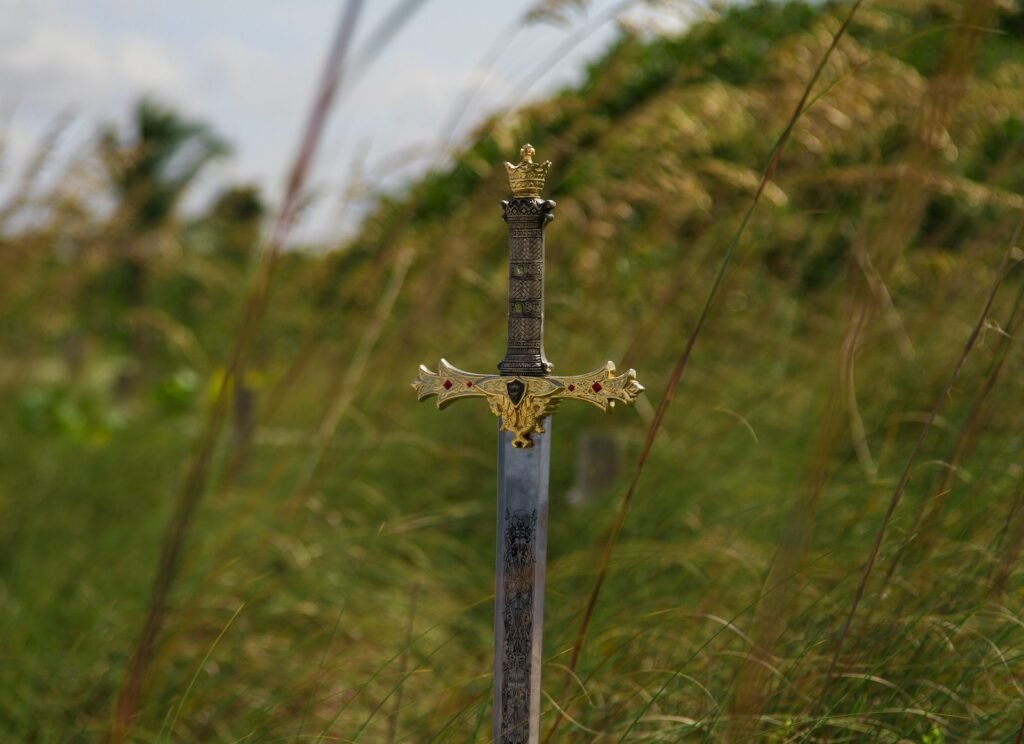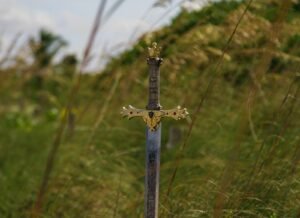The Mysterious Legend of King Arthur
King Arthur, the legendary figure who led the defense of Britain against the invading Saxons in the Dark Ages, has fascinated historians and romantics alike for centuries. While the tales of his bravery, his knights of the Round Table, and his magical sword Excalibur have captivated the imagination, the historical existence of this iconic figure remains a subject of debate and speculation. In this article, we will delve into the evidence and theories surrounding King Arthur’s existence, exploring the early textual references, historical context, possible candidates, archaeological findings, and the enduring myths that have shaped his story.
Early Textual References: Clues to Arthur’s Existence
The earliest references to King Arthur can be found in texts such as the Welsh Annals and the Historia Brittonum. These texts, dating back to the 9th and 10th centuries, mention a figure named Arthur who fought against the invading Saxons. While these references provide some evidence of Arthur’s existence, they are sparse and lack the detailed accounts that later legends would provide.
Dark Ages Britain: Historical Context of Arthur’s Era
To understand Arthur’s potential historical existence, it is crucial to examine the context of Dark Ages Britain. This era, following the fall of the Roman Empire, was marked by political instability and frequent invasions. The chaos and fragmentation of the period provide a plausible backdrop for the rise of a heroic figure like Arthur, who could have united the Britons in the face of external threats.
Arthurian Legends: Myth or Historical Fact?
The Arthurian legends, popularized in medieval romances and tales such as Sir Gawain and the Green Knight and Le Morte d’Arthur, have played a significant role in shaping Arthur’s story. However, these later literary works often blurred the line between myth and historical fact, embellishing the deeds of Arthur and his knights with elements of magic and fantasy. Separating fact from fiction in the Arthurian legends is a challenging task for historians.
Geoffrey of Monmouth: Role in Shaping Arthur’s Story
One of the most influential figures in solidifying the Arthurian legend was Geoffrey of Monmouth, a 12th-century Welsh cleric and writer. In his work Historia Regum Britanniae, Geoffrey introduced many of the iconic elements associated with Arthur, including his birth at Tintagel and his final rest on the mystical island of Avalon. While Geoffrey’s work greatly popularized Arthur’s story, it is important to recognize that it was a creative work of fiction, rather than a historical account.
Historical Figures: Possible Candidates for King Arthur
Several historical figures have been suggested as potential candidates for the real King Arthur. One prominent theory proposes that Arthur was actually a Romanized British leader named Ambrosius Aurelianus, who led the resistance against the Saxons in the late 5th century. Other candidates include Owain Ddantgwyn, a 6th-century British nobleman, and Riothamus, a British king who fought against the Visigoths in Gaul.
Archaeological Evidence: Searching for Arthur’s Realm
Archaeological excavations have been conducted in various locations across Britain in search of evidence supporting the existence of King Arthur. Unfortunately, no conclusive findings have been made to directly link any specific site to Arthur. However, several sites have been associated with Arthur, such as Cadbury Castle in Somerset and Castle Dore in Cornwall, although their connections to Arthur remain speculative.
Tintagel: The Legendary Birthplace of King Arthur
Tintagel, a dramatic coastal site in Cornwall, has long been associated with Arthur’s birthplace. In the 12th century, Geoffrey of Monmouth popularized this connection, and subsequent archaeological excavations have revealed evidence of a high-status settlement during the Arthurian era. However, the exact link between Tintagel and Arthur remains uncertain, and some researchers argue that the association is merely a product of medieval romanticism.
Battle of Badon: Arthur’s Triumph Over the Saxons?
One of the most significant events attributed to King Arthur is the Battle of Badon, where he supposedly dealt a decisive blow to the invading Saxons. Historical records from the late 6th century mention a battle at Badon, but it is unclear whether Arthur was the leader or even involved. The lack of concrete evidence makes it difficult to confirm the existence of Arthur at this particular battle.
Avalon: Unveiling the Mythical Island of Arthur’s Rest
The island of Avalon, where Arthur was said to have been taken after his final battle, has captured the imagination for centuries. Yet, despite countless theories and searches, the location of Avalon remains a mystery. Some suggest it may have been an island in Somerset, while others argue it is a symbolic place rather than a physical location. The myth of Avalon adds to the enigma surrounding the historical existence of King Arthur.
Arthur’s Court: A Glimpse into Camelot’s Existence
Camelot, the legendary court where King Arthur held sway, has been the subject of speculation and imagination. While no definitive evidence has been found to support the existence of Camelot, several locations, such as Cadbury Castle and Tintagel, have been proposed as potential sites. However, these suggestions remain speculative, and the true nature of Camelot, if it existed, may forever remain elusive.
Debunking the Legend: The Non-Existence of King Arthur
Despite the enduring fascination and countless efforts to uncover the historical truth of King Arthur, the reality of his existence remains elusive. While early textual references and the turbulent historical context of Dark Ages Britain provide some tantalizing clues, the lack of concrete evidence leaves the question of Arthur’s existence open to interpretation and speculation. Ultimately, whether King Arthur was a real historical figure or a mythical creation born from the imaginations of storytellers, his legend will continue to captivate minds and inspire tales of chivalry and heroism for generations to come.


